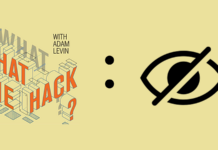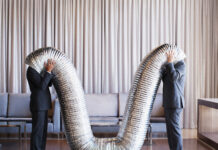The folks at Dictionary.com chose “privacy” as their word of the year in 2013. It was a long journey to that distinction, during which it inexorably became the engine driving more companies than not. Privacy is the consumer-consequence manifestation of big data, which increasingly shapes approaches to marketing, product development and a vast array of services. In short, privacy has become a price of consumption.
For years, popular opinion held that the threat of identity theft was overblown and that we in the business of resolving it were selling fear. All that has changed.
Without doubt, a never-ending parade of data breaches has had a lot to do with this change in public perception. The same year privacy became a watchword, Target was breached. It was the tipping point at the consumer level for the issue of privacy and rise of big data because it affected large numbers of people at once and brought the term “personally identifiable information” or PII into the mainstream.
Consumers then began to understand what constitutes PII – for example, email addresses, which usually tie to our names and which we use to access sites for daily business. They learned that many other bits of information shared online, such as birthdates, matter more than previously thought and that, in the big data scheme of things, a consumer is just a collage of random details which, aggregated correctly, might as well be a strand of DNA. Consumers learned some strategies to protect themselves as well, such as providing answers to security questions that are not necessarily true but that are easy for them to remember.
2014 was the year consumers began to understand that breaches were the third certainty in life, as many large companies, institutions and retailers were attacked. It was the year Apple’s cloud got gamed and the nude photos of many celebrities found their way onto websites hither and yon. And that breach was the direct result of another kind of data harvesting: personal facts, the kind used to answer security questions. Who else would have all that information “out there” but celebrities? Millions know the most intimate details thanks to “What’s the shoe size of your second cousin twice removed?” media coverage. That’s the stuff of security questions, and that’s precisely how those personal pictures were nabbed.
This was the year that consumers learned up close and personal the danger of sharing such private details. They became savvier with every passing breach.
But is it enough?
The Target breach followed a couple of years attended by the low hum of consumer-level discussion of privacy on social networking sites. That conversation led to a larger discussion of the use of personally identifiable information. Consumers finally started to “grok” it: if a service is free, they are the product. Big data became more prevalent in the news, and consumers began to understand the extent to which their data is collected online.
Little pieces of a consumer’s information are everywhere, and he or she can’t know that it’s getting harvested—not all the time. Because there is so much commerce and potential windfall on the line here, it is exceedingly difficult to get a consensus on how companies should use your data or even whether or not they should be allowed to collect it.
Most simply, we are simultaneously the product, the consumer and the future breach victim. So what can we do? That’s where we are now, with people realizing there is an issue that exists not on some abstract level, but that will almost certainly affect us directly at some point and with consequences that could literally change the our career trajectories, our financial well-being, our healthcare and our freedom to travel, or even wander about in public without being arrested.
While online privacy has grown in the public consciousness, we are nowhere near a universal solution to the privacy and commerce problem. There is a lot of good work out there, such as Ann Cavoukian’s advocacy of privacy by design, in which a company builds products and services around transparency regarding the way they use consumer information. But the reality here is that big data relies not only on cloud servers but the figurative shadows of corporate secrecy. Consumers don’t know which way is up because only the big players in big data truly know what they know about you and me.
It’s important for businesses to make corporate commitments to transparency and consumer education. Transparency and education help organizations embody Data Privacy Day’s theme of “Respecting Privacy, Safeguarding Data and Enabling Trust. The more people know about how companies collect, manage and use their personal information, the more easily they can make smart choices and manage the flow of their data.
This article originally appeared at : http://staysafeonline.org/blog/the-best-privacy-solution-assume-there-is-none










